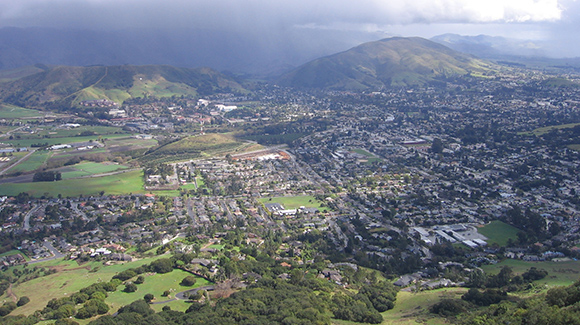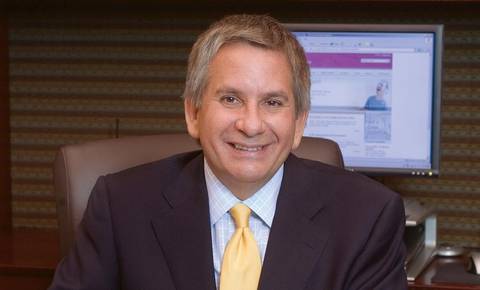
(Photo Credit: Basar/Wikimedia Commons)
Originally published in The Tribune
The first step in problem-solving is to admit there’s a problem. That’s why it was so heartening to see the San Luis Obispo City Council declare more housing as a major goal for 2017-19.
The key to achieving that goal is already in place. The council’s 2014 update of the Land Use and Circulation Elements — or LUCE — identifies the amount of housing we need and where it should be built. The city needs to implement that plan, but I have reservations about our political will to move forward.
I’m especially concerned that we aren’t responding with sufficient urgency to a problem that affects this community’s overall health. Make no mistake, the high price of housing may ultimately adversely affect the excellent quality of care we’ve come to expect in San Luis Obispo County:
▪ We all know people here who spend more than 30 percent of their income on housing, the tipping point when it becomes increasingly difficult to pay for other necessities. With that comes an increase in “home insecurity,” the relentless stressing out over how to pay the bills, which, according to a number of peer-reviewed studies, has acute and chronic health consequences.
▪ The high cost of housing all too often thwarts our efforts to recruit and retain the professionals essential to providing the high quality of health care this community deserves — nurses, doctors, technicians, pharmacists and administrators. We frequently lose good employees and good candidates to more affordable locations.
▪ This recruitment and retention problem afflicts the entire medical community. My colleagues at Arroyo Grande Community, Sierra Vista and Twin Cities have spoken publicly about how the housing shortage directly correlates to the shortage of health care professionals.
For me, the housing shortage is also a moral issue. I do not want San Luis Obispo to be affordable only for the wealthy. I want to live in an inclusive community, one that thrives because we make sure housing is affordable for our teachers and nurses, our police and firefighters, and all who work here.
What can we do to change things? We can strongly urge the City Council to move forward and implement the plans already on the books, specifically LUCE and the projects included in that document.
The plans are sound. But implementation needs attention.
Here’s a telling fact: According to SLOCOG’s 2013 Regional Housing Need Allocation, the city should be averaging 208 new residential units a year. However, according to the city’s 2016 General Plan Annual Review, the city has been averaging 96 new residential units a year over the past three years — less than half its allocation.
We need not fear more housing. New homes are required to be environmentally friendly and energy efficient. Developers will pay for traffic improvements to guard against further congestion.
 More housing in San Luis Obispo would put more people closer to their jobs, reducing commutes and tail-pipe emissions, one of the best things we can do to address climate change.
More housing in San Luis Obispo would put more people closer to their jobs, reducing commutes and tail-pipe emissions, one of the best things we can do to address climate change.
Developers are ready. They have good plans and they are diligently going through the arduous approval process. Some residents will oppose the plans, saying, “Not in my backyard.” Yet, I believe the vast majority of residents grasp both the economic and the moral imperatives for building more housing here, and soon.
If you believe as I do, please contact City Council members and urge them to make good on their goal to facilitate more housing of all types. Our community’s health depends on it.
Alan Iftiniuk has been president and chief executive officer of French Hospital Medical Center since 2004.

